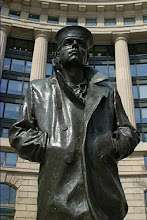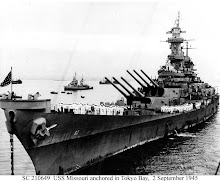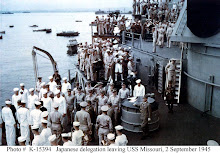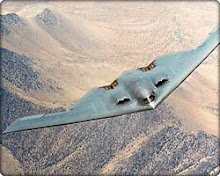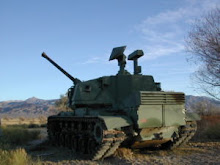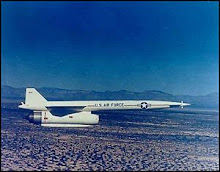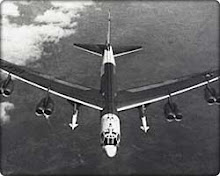
The Nature of God: THE SUPERIORITY OF HINDUISM TO ISLAM
from Part Two, Chapter 2 of INDIA IN DANGER: THE OFFENSIVE OF ISLAM by Bojil Kolarov
Chapter 2: About the superiority of Hinduism to Islam
The ignorant people over the world often name the Hindus “polytheists”. However, this is not at all true. Something more – the Hinduism is the only religion in the world able to explain the nature of the Only God and to defend the ideas of monism from the attacks of the atheists. Once the delusion comes from the ignorance of the monotheists, not knowing what exactly they are praying at, and second – from the imperfection of the human language, which is unable to express in words the whole complexity of the higher reality. What exactly are we talking about?
As it was already stated, God is the other name of the Absolute Spirit. It is created from the highest and finest substance of the Universe – the spiritual substance, that is the cause for the material worlds. Therefore, God being the pure essence of spirit, needs not to be personality (as far as personality means the presence of another rougher substance – the mental one). The ancient Indians understood this very well and that’s why they names the Deity with the word “Brahman” i.e the impersonal higher reality or the pure spirit of the Universe.
However, the not –so- enlightened people from the Near East, due to their inability to understand the real nature of Brahman, turned the latter into a personality. Unknowingly they decided that if God should be considered Almighty, he might more or less resemble man. So they ascribed to him some Ego (mind), and began giving his individuality different names like Jehovah, Allah etc. The Muslims and the Christians thought that in this way they exalt God, but in fact they abased Him. Because nothing can be higher than the pure, virgin Spirit, “unpolluted” by any Ego.** This east was certainly known to Moses, Christ and Mohammad, but they were approaching rather primitive people and could not preach some very complex philosophy. As for the so called “Gods” of the Hindus, the worshipping of whom brought real outburst of indignation in the followers of the monotheistic religions, we must say they should not be accepted so literally, but more as corresponding to the angels and archangels in Christianity and Islam. For example, it is known that for the Islam there are about three hundred million Gods of the Hinduism. It is obvious, in this case it is a trick of words, it is not so important whether the higher creatures in the Universe will be called “Gods” or “Angels”, but the content of word is more important. In this case, it is more important to be accepted the undivided authority in the Universe, its sole First source.
From all we have said so far it turns out that the Hindus are not at all polytheists, but they are more monists. The Hindus' Brahman corresponds to the Muslim’s Allah, and the Hindus' gods to the Muslim’s angels and archangels. The fact that the Muslim’s clergymen for 1000 years could not understand this obvious fact is a clear sign for the imperperfection of Islam. The Indian priests have always known that Islam is a rather rough and simplified approach to the problems of metaphysics and philosophy.
This is illustrated by the fact that the Muslims do not know where to look for God. Considering Him as a personality, they naturally seek him somewhere in the objectivised world (often in the sky), not being able to understand that he is inside man. The truth about the identity between the Absolute Spirit (Brahman) and the individual Spirit (Atman) is revealed only to the Vedanta. The philosophic system of Vedanta undoubtedly, is the highest point to which human speculation has ever reached and only it can explain and unite all world religions. To compare the Muslim philosophy with Vedanta is as if to compare the dry mountains of Yemen with the Himalayas.
More at http://bojilkolarov.voiceofdharma.com/offensive.html#2ch2
from
INDIA IN DANGER: THE OFFENSIVE OF ISLAM
by Bojil Kolarov
http://bojilkolarov.voiceofdharma.com/offensive.html
AND
"The God"
The religion of Islam has as its focus of worship a deity by the name of "Allah." The Muslims claim that Allah in pre-Islamic times was the biblical God of the Patriarchs, prophets, and apostles. The issue is thus one of continuity. Was "Allah" the biblical God or a pagan god in Arabia during pre- Islamic times? The Muslim's claim of continuity is essential to their attempt to convert Jews and Christians for if "Allah" is part of the flow of divine revelation in Scripture, then it is the next step in biblical religion. Thus we should all become Muslims. But, on the other hand, if Allah was a pre- Islamic pagan deity, then its core claim is refuted. Religious claims often fall before the results of hard sciences such as archeology. We can endlessly speculate about the past or go and dig it up and see what the evidence reveals. This is the only way to find out the truth concerning the origins of Allah. As we shall see, the hard evidence demonstrates that the god Allah was a pagan deity. In fact, he was the Moon-god who was married to the sun goddess and the stars were his daughters.
from http://www.biblebelievers.org.au/moongod.htm
AND FURTHER . . .
The Ultimate Reality
[quote]
In Hindu esoteric imagination, the supreme and ultimate reality is believed to reside in the Universal Soul, which is said to pervade the entire manifested cosmos. The cosmos itself is thought to have evolved from this abstract entity, which is formless and devoid of any qualitative attributes (Skt. Nirguna Brahman). It is neither male nor female, and is infinite, without beginning or end. It is both around us and inside us. The goal indeed of all spiritual practice is to unite with this Supreme Soul.
To the eternal credit of Indian creativity, abstract concepts such as the one above are made intelligible to ordinary mortals like you and me through the invention of various forms which make comprehensible the ultimate, formless reality. Thus the Nirguna Brahmana (Nirguna - without quality) becomes Saguna Brahmana (Saguna - having qualities). This transformed entity is known in Sanskrit as Ishvara.
The entire universe, along with the dynamic processes underlying it, is said to stem from Ishvara. For example, when Ishvara creates the universe, he is called Brahma, when he protects, he is called Vishnu, and when he destroys, he is Shiva. The three together constitute the trinity, which controls the universe and all its functions.
--from a Hindu site (not sure which one, but, as I recall, it might be http://www.hindu-blog.com/)
Farthest end of Universe Man has ever seen
By Ganpati Sarkar

"If you are thinking those bright dots as stars then think again . They are not. In fact, each of them , each single , bright or dim , every single dot here in this picture is a galaxy , and each galaxy has millions of stars in it".
www.ganpatisarkar.com/2008_04_01_archive.html
CU-Boulder Supercomputer Simulation Of Universe Expected To Help In Search For Missing Matter
Dec. 6, 2007

Pictured is a portion of a supercomputer simulation of the universe showing a region roughly 1.5 billion light-years on a side. The bright object in the center is a galaxy cluster about 1 million-billion times the mass of the sun. In between the filaments, which store most of the universe's mass, are giant, spherical voids nearly empty of matter.
Much of the gaseous mass of the universe is bound up in a tangled web of cosmic filaments that stretch for hundreds of millions of light-years, according to a new supercomputer study by a team led by the University of Colorado at Boulder. The study indicated a significant portion of the gas is in the filaments -- which connect galaxy clusters -- hidden from direct observation in enormous gas clouds in intergalactic space known as the Warm-Hot Intergalactic Medium, or WHIM, said CU-Boulder Professor Jack Burns of the astrophysical and planetary sciences department. The team performed one of the largest cosmological supercomputer simulations ever, cramming 2.5 percent of the visible universe inside a computer to model a region more than 1.5 billion light-years across. One light-year is equal to about six trillion miles. A paper on the subject will be published in the Dec. 10 issue of the Astrophysical Journal. In addition to Burns, the paper was authored by CU-Boulder Research Associate Eric Hallman of APS, Brian O'Shea of Los Alamos National Laboratory, Michael Norman and Rick Wagner of the University of California, San Diego and Robert Harkness of the San Diego Supercomputing Center. It took the researchers nearly a decade to produce the extraordinarily complex computer code that drove the simulation, which incorporated virtually all of the known physical conditions of the universe reaching back in time almost to the Big Bang, said Burns. The simulation -- which uses advanced numerical techniques to zoom-in on interesting structures in the universe -- modeled the motion of matter as it collapsed due to gravity and became dense enough to form cosmic filaments and galaxy structures. "We see this as a real breakthrough in terms of technology and in scientific advancement," said Burns. "We believe this effort brings us a significant step closer to understanding the fundamental constituents of the universe." According to the standard cosmological model, the universe consists of about 25 percent dark matter and 70 percent dark energy around 5 percent normal matter, said Burns. Normal matter consists primarily of baryons - hydrogen, helium and heavier elements -- and observations show that about 40 percent of the baryons are currently unaccounted for. Many astrophysicists believe the missing baryons are in the WHIM, Burns said. "In the coming years, I believe these filaments may be detectable in the WHIM using new state-of-the-art telescopes," said Burns, who along with Hallman is a fellow at CU-Boulder's Center for Astrophysics and Space Astronomy. "We think that as we begin to see these filaments and understand their nature, we will learn more about the missing baryons in the universe." Two of the key telescopes that astrophysicists will use in their search for the WHIM are the 10-meter South Pole Telescope in Antarctica and the 25-meter Cornell-Caltech Atacama Telescope, or CCAT, being built in Chile's Atacama Desert, Burns said. CU-Boulder scientists are partners in both observatories. The CCAT telescope will gather radiation from sub-millimeter wavelengths, which are longer than infrared waves but shorter than radio waves. It will enable astronomers to peer back in time to when galaxies first appeared -- just a billion years or so after the Big Bang -- allowing them to probe the infancy of the objects and the process by which they formed, said Burns. The South Pole Telescope looks at millimeter, sub-millimeter and microwave wavelengths of the spectrum and is used to search for, among other things, cosmic microwave background radiation - the cooled remnants of the Big Bang, said Burns. Researchers hope to use the telescopes to estimate heating of the cosmic background radiation as it travels through the WHIM, using the radiation temperature changes as a tracer of sorts for the massive filaments. The CU-Boulder-led team ran the computer code for a total of about 500,000 processor hours at two supercomputing centers --the San Diego Supercomputer Center and the National Center for Supercomputing Applications at the University of Illinois at Urbana-Champaign. The team generated about 60 terabytes of data during the calculations, equivalent to three-to-four times the digital text in all the volumes in the U.S. Library of Congress, said Burns. Burns said the sophisticated computer code used for the universe simulation is similar in some respects to a code used for complex supercomputer simulations of Earth's atmosphere and climate change, since both investigations focus heavily on fluid dynamics. The Astrophysical Journal study was funded by NASA, the National Science Foundation and the U.S. Department of Energy through the Los Alamos National Laboratory.
Contact: Jack Burns, (303) 735-0963 Jack.Burns@cu.edu Jim Scott, (303) 492-3114
Office of News Services584 UCB • Boulder, CO 80309-0584 • 303-492-6431 • FAX: 303-492-3126 • cunews@colorado.edu© Regents of the University of Colorado PrivacyA University Communications site
www.colorado.edu/news/releases/2007/478.html
A SWIRE Picture is Worth Billions of Years

These spectacular images, taken by the Spitzer Wide-area Infrared Extragalactic (SWIRE) Legacy project, encapsulate one of the primary objectives of the Spitzer mission: to connect the evolution of galaxies from the distant, or early, universe to the nearby, or present day, universe. The larger picture (top) depicts one-tenth of the SWIRE survey field called ELAIS-N1. In this image, the bright blue sources are hot stars in our own Milky Way, which range anywhere from 3 to 60 times the mass of our Sun. The fainter green spots are cooler stars and galaxies beyond the Milky Way whose light is dominated by older stellar populations. The red dots are dusty galaxies that are undergoing intense star formation. The faintest specks of red-orange are galaxies billions of light-years away in the distant universe. The three lower panels highlight several regions of interest within the ELAIS-N1 field. The Tadpole galaxy (bottom left) is the result of a recent galactic interaction in the local universe. Although these galactic mergers are rare in the universe's recent history, astronomers believe that they were much more common in the early universe. Thus, SWIRE team members will use this detailed image of the Tadpole galaxy to help understand the nature of the "faint red-orange specks" of the early universe. The middle panel features an unusual ring-like galaxy called CGCG 275-022. The red spiral arms indicate that this galaxy is very dusty and perhaps undergoing intense star formation. The star-forming activity could have been initiated by a near head-on collision with another galaxy. The most distant galaxies that SWIRE is able to detect are revealed in a zoom of deep space (bottom right). The colors in this feature represent the same objects as those in the larger field image of ELAIS-N1. The observed SWIRE fields were chosen on the basis of being "empty" or as free as possible from the obscuring dust, gas, and stars of our own Milky Way. Because Earth is located within the Milky Way galaxy, there is always a screen of Milky Way objects blocking our view of the rest of the universe. In some places, our view of the larger universe is less obscured than others and for the most part is considered "empty." These are prime observing spots for astronomers interested in studying objects beyond the Milky Way. ELAIS-N1 is only one of six SWIRE survey fields. The full survey covers 49 square degrees of the sky, equivalent to the area covered by about 250 full moons. The SWIRE image is a 3-channel false-color composite, where blue represents visible green light (light that would appear to be blue/green to the human eye), green captures 3.6 microns, and red represents emissions at 8 microns. Interesting Note: From the Earth the SWIRE image (top image) can be seen in one square degree of sky, or a patch of sky that is approximately the size of a pea held out at arms length.
http://www.nasaimages.org/luna/servlet/detail/nasaNAS~12~12~64107~168461:A-SWIRE-Picture-is-Worth-Billions-o
A SWIRE Picture is Worth Billions of Years
Spitzer Wide-area Infrared Extragalactic (SWIRE)
NASA/JPL-Caltech/C. Lonsdale (Caltech/IPAC) and the SWIRE Team
2005/10/27
Galaxy evolution in cyber universe matches
astronomical observations in fine detail
June 5th, 2006

This image from a supercomputer simulation of the evolution of the universe shows a cubic volume of outer space measuring approximately 280 million light years across. At this stage, the universe is 13.4 billion years old (the present). The bright dots correspond with high concentrations of dark matter, which are associated with sites of galaxy formation. The simulation shows how dark matter, an invisible material of unknown composition, herded luminous matter in the universe from its initial smooth state into the cosmic web of galaxies and galaxy clusters that populate the universe.
Credit: Image courtesy of Andrey Kravtsov
Scientists at the University of Chicago have bolstered the case for a popular scenario of the big bang theory that neatly explains the arrangement of galaxies throughout the universe. Their supercomputer simulation shows how dark matter, an invisible material of unknown composition, herded luminous matter in the universe from its initial smooth state into the cosmic web of galaxies and galaxy clusters that populate the universe.
Hindu Concept of the Beginning and End of Universe
http://www.hindu-blog.com/2007/04/hindu-concept-of-beginning-and-end-of.html
The video [at http://www.hindu-blog.com/2007/04/hindu-concept-of-beginning-and-end-of.html] compares the concept of beginning and end of universe in Hinduism with that of modern cosmology. The video is presented by Carl Edward Sagan - an American astronomer and astrobiologist and a highly successful popularizer of astronomy, astrophysics, and other natural sciences.

Below is the transcript of the video. This is because the subject matter is very complex and you might need repeated listening.
Hindu religion is the only one of the world’s great faiths dedicated to the idea that the cosmos itself undergoes an immense, indeed an infinite number of deaths and rebirths.
It is the only religion in which the time scales correspond, no doubt, by accident, to those of modern scientific cosmology. Its cycles run from our ordinary day and night to a day and night of Brahma 8.64 billion years long. Longer than the age of the earth or the sun and about half of the time since the big bang. And there are much longer time scales still.
There is the deep and the appealing notion that the universe is but the dream of the god who after a 100 Brahma years… dissolves himself into a dreamless sleep… and the universe dissolves with him… until after another Brahma century… he starts… recomposes himself and begins again the dream… the great cosmic lotus dream.
Meanwhile… elsewhere… there are an infinite number of other universes… each with its own god… dreaming the cosmic dream…
These great ideas are tempered by another perhaps still greater it is said that men may not be the dreams of the gods but rather that the gods are the dreams of men.
In India, there are many gods and each god has many manifestations. These Chola bronzes cast in the eleventh century include several different incarnations of the god Shiva. Seen here at his wedding.
The most elegant and sublime of these bronzes is a representation of the creation of the Universe at the beginning of each cosmic cycle – a motif known as the cosmic dance of Shiva. The god has four hands. In the upper right hand is the drum whose sound is the sound of creation. And in the upper left hand is a tongue of flame… a reminder that the universe now newly created… will billion of years from now will be utterly destroyed. Creation. Destruction.
These profound and lovely ideas are central to ancient Hindu beliefs as exemplified in this Chola temple at …. They are kind of reminiscent of modern astronomical ideas. Without doubt the universe has been expanding since the big bang but it is by no means clear that it will continue to expand for ever. If there is less than a certain amount of matter in the universe, then the mutual gravitation of the receiving galaxies will be insufficient to stop the expansion and the Universe will run away forever. But if there is more matter than we can see…hidden away in black holes… say or in hot but invisible gas between galaxies, then the universe holds together, and partakes in every Indian succession of cycles… expansion followed by contraction… cosmos upon cosmos…Universes without end. If we live in such an oscillating universe, then the Big Bang is not the creation of the cosmos but merely the end of the previous cycle the destruction of the last incarnation of the cosmos.
Neither of these modern cosmologies may be altogether to our liking. In one cosmology, the universe is created somehow from nothing 15 to 20 billion years ago and expands forever. The galaxy is mutually receding until the last one disappears over our cosmic horizon. Then the galactic astronomers are out of business… the stars cool and die…matter itself decays…and the Universe becomes a thin cold haze of elementary particles.
In the other, the oscillating universe, the cosmos has no beginning and no end… and we are in the midst of an infinite cycle of cosmic deaths and rebirths. With no information trickling through the cusps of the oscillation…nothing of the galaxies, stars, planets, life forms, civilizations evolved in the previous incarnation of the universe trickles through the cusp filters past the Big Bang to be known in our universe.
The death of the universe in either cosmology may seem little depressing. But we may take some solace in the time scales involved. These events will take tens of billions of years or more. Human beings or our descendants whoever they might be can do a great deal of good in the tens of billions of years before the cosmos dies.
For those people with small kpbs connection, the video might pause a number of times while playing the first time. But after the completion of the video once, you can play it again and view without pauses.
Posted by abhilash on 28.4.07
Follow the link for the latest on: Hindu, Hinduism, Science, videos
14 comments at
http://www.hindu-blog.com/2007/04/hindu-concept-of-beginning-and-end-of.html
Carl Sagan
From Wikipedia, the free encyclopedia
Carl Edward Sagan, Ph.D. (November 9, 1934 – December 20, 1996) was an American
astrochemist, author, and highly successful popularizer of astronomy, astrophysics and other natural sciences. He pioneered exobiology and promoted the Search for Extra-Terrestrial Intelligence (SETI).
[excerpt]
Sagan wrote frequently about religion and the relationship between religion and science, expressing his skepticism about the conventional conceptualization of God as a sapient being. Sagan once stated, for instance, that "The idea that God is an oversized white male with a flowing beard, who sits in the sky and tallies the fall of every sparrow is ludicrous. But if by 'God' one means the set of physical laws that govern the universe, then clearly there is such a God. This God is emotionally unsatisfying ... it does not make much sense to pray to the law of gravity."[24] Sagan is also widely regarded as a freethinker or skeptic; one of his most famous quotations, in Cosmos, was, "Extraordinary claims require extraordinary evidence." (This was actually based on a nearly identical earlier quote by fellow CSICOP founder Marcello Truzzi, "Extraordinary claims require extraordinary proof."[25]) The quote is also known, under different wording, as the principle of Laplace—attributed to Pierre-Simon Marquis de Laplace (1749-1827), a French mathematician and astronomer: "The weight of evidence for an extraordinary claim must be proportioned to its strangeness." Sagan was, however, not an atheist, expressing that, "An atheist has to know a lot more than I know."[26] In reply to a direct question in 1996 about his religious beliefs, "Sagan gave a direct answer: 'I'm agnostic.'"[27]
http://en.wikipedia.org/wiki/Carl_Sagan
ORIGIN OF HINDUISM
Origin of Hinduism - I
If you ask about the origin of Hinduism to a person who has perceived the essence of Hinduism, the answer will be a simple smile. This is because Hinduism has no history, it believes in the present. This might be hard for a common man to digest because we live in a world which gives so much importance to history. If you are looking for dates and other facts you can find it in these articles – Year of origin of Hinduism and History of Hindu religion and Origin of the term Hindu.
http://www.hindu-blog.com/2006/09/origin-of-hinduism-i.html
The Religion of Arabia

During the nineteenth century, Amaud, Halevy and Glaser went to Southern Arabia and dug up thousands of Sabean, Minaean, and Qatabanian inscriptions which were subsequently translated. In the 1940's, the archeologists G. Caton Thompson and Carleton S. Coon made some amazing discoveries in Arabia. During the 1950's, Wendell Phillips, W.F. Albright, Richard Bower and others excavated sites at Qataban, Timna, and Marib (the ancient capital of Sheba). Thousands of inscriptions from walls and rocks in Northern Arabia have also been collected.
Reliefs and votive bowls used in worship of the "daughters of Allah" have also been discovered. The three daughters, al-Lat, al-Uzza and Manat are sometimes depicted together with Allah the Moon-god represented by a crescent moon above them. The archeological evidence demonstrates that the dominant religion of Arabia was the cult of the Moon-god.
In Old Testament times, Nabonidus (555-539 BC), the last king of Babylon, built Tayma, Arabia as a center of Moon-god worship. Segall stated, "South Arabia's stellar religion has always been dominated by the Moon-god in various variations." Many scholars have also noticed that the Moon-god's name "Sin" is a part of such Arabic words as "Sinai," the "wilderness of Sin," etc. When the popularity of the Moon-god waned elsewhere, the Arabs remained true to their conviction that the Moon-god was the greatest of all gods. While they worshipped 360 gods at the Kabah in Mecca, the Moon-god was the chief deity. Mecca was in fact built as a shrine for the Moon-god.
http://www.biblebelievers.org.au/moongod.htm

Hindu Gods and Goddesses



. . . numerous gods and goddesses in the form of idols and images serve the purpose of concentration.
In the words of Sir C P Ramaswamy Iyer "Hinduism has recognized different stages of evolutionary progress in the case of several races and classes of mankind and has not only authorized but actually encouraged the adoration of pictures and images as a means of concentration."
Thousands of years ago Sanatana Dharma or Hinduism flourished in an India (Bharat) which had many races and tribes. They worshiped multiplicity of objects, gods and goddesses and many of them were manifestations of different aspects of Mature Nature.
Take a look at the three main deities in Hinduism – Brahma, Vishnu and Shiva. Brahma creates, Vishnu sustains and Shiva destroys. They are nothing but three different faces of Mother Nature. Nature creates, nature sustains and nature destroys.
Each god and goddess in Hinduism is a path to reach the ultimate reality. If you are not happy with the 330 million, create a new god and pray to it. This new god will be a new path to merge with the Brahman.
You may also like to read
The symbolism of 330 million gods and about the number 33
http://www.hindu-blog.com/2007/05/hindu-gods-and-goddesses.html

Vishnu is . . . described in the Bhagavad Gita as having a 'Universal Form' (Vishvarupa) which is beyond the ordinary limits of human sense perception.[8]
http://en.wikipedia.org/wiki/Vishnu
The ten incarnations or ‘Dasa Avatara’ of Lord Vishnu is an extraordinary recording of the evolution of human life and advance in human civilization. In Hindu religion, the three main deities are Lord Brahma, Vishu and Shiva. Brahma creates, Vishnu protects and Shiva destroys - three faces of Mother Nature. Lord Vishnu descends on Earth to uphold dharma and to cleanse the Earth of evil. So far, Lord Vishnu has appeared nine times on Earth and the tenth, kalki, is expected.
from Hinduism and the Evolution of Human civilization
http://www.hindu-blog.com/2007/06/ten-incarnations-of-lord-vishnu-in.html
Rare 'Star-Making Machine' Found in Distant Universe
July 10th, 2008

The green and red splotch in this image is the most active star-making galaxy in the very distant universe. Credit: NASA Credit: NASA
Astronomers have uncovered an extreme stellar machine -- a galaxy in the very remote universe pumping out stars at a surprising rate of up to 4,000 per year. In comparison, our own Milky Way galaxy turns out an average of just 10 stars per year.
The discovery, made possible by several telescopes including NASA's Spitzer Space Telescope, goes against the most common theory of galaxy formation. According to the theory, called the Hierarchical Model, galaxies slowly bulk up their stars over time by absorbing tiny pieces of galaxies -- and not in one big burst as observed in the newfound "Baby Boom" galaxy.
"This galaxy is undergoing a major baby boom, producing most of its stars all at once," said Peter Capak of NASA's Spitzer Science Center at the California Institute of Technology, Pasadena. "If our human population was produced in a similar boom, then almost all of the people alive today would be the same age." Capak is lead author of a new report detailing the discovery in the July 10th issue of Astrophysical Journal Letters .
The Baby Boom galaxy, which belongs to a class of galaxies called starbursts, is the new record holder for the brightest starburst galaxy in the very distant universe, with brightness being a measure of its extreme star-formation rate. It was discovered and characterized using a suite of telescopes operating at different wavelengths. NASA's Hubble Space Telescope and Japan's Subaru Telescope, atop Mauna Kea in Hawaii, first spotted the galaxy in visible-light images, where it appeared as an inconspicuous smudge due to is great distance.
It wasn't until Spitzer and the James Clerk Maxwell Telescope, also on Mauna Kea in Hawaii, observed the galaxy at infrared and submillimeter wavelengths, respectively, that the galaxy stood out as the brightest of the bunch. This is because it has a huge number of youthful stars.
When stars are born, they shine with a lot of ultraviolet light and produce a lot of dust. The dust absorbs the ultraviolet light but, like a car sitting in the sun, it warms up and re-emits light at infrared and submillimeter wavelengths, making the galaxy unusually bright to Spitzer and the James Clerk Maxwell Telescope.
To learn more about this galaxy's unique youthful glow, Capak and his team followed up with a number of telescopes. They used optical measurements from Keck to determine the exact distance to the galaxy -- a whopping12.3 billion light-years. That's looking back to a time when the universe was 1.3 billion years old (the universe is approximately 13.7 billion years old today).
"If the universe was a human reaching retirement age, it would have been about 6 years old at the time we are seeing this galaxy," said Capak.
The astronomers made measurements at radio wavelengths with the National Science Foundation's Very Large Array in New Mexico. Together with Spitzer and James Clerk Maxwell data, these observations allowed the astronomers to calculate a star-forming rate of about 1,000 to 4,000 stars per year. At that rate, the galaxy needs only 50 million years, not very long on cosmic timescales, to grow into a galaxy equivalent to the most massive ones we see today.
While galaxies in our nearby universe can produce stars at similarly high rates, the farthest one known before now was about 11.7 billion light-years away, or a time when the universe was 1.9 billion years old.
"Before now, we had only seen galaxies form stars like this in the teenaged universe, but this galaxy is forming when the universe was only a child," said Capak. "The question now is whether the majority of the very most massive galaxies form very early in the universe like the Baby Boom galaxy, or whether this is an exceptional case. Answering this question will help us determine to what degree the Hierarchical Model of galaxy formation still holds true."
"The incredible star-formation activity we have observed suggests that we may be witnessing, for the first time, the formation of one of the most massive elliptical galaxies in the universe," said co-author Nick Scoville of Caltech, the principal investigator of the Cosmic Evolution Survey, also known as Cosmos. The Cosmos program is an extensive survey of a large patch of distant galaxies across the full spectrum of light.
"The immediate identification of this galaxy with its extraordinary properties would not have been possible without the full range of observations in this survey," said Scoville.
Source: NASA Source: NASA
http://www.physorg.com/news134922376.html

Images and Comments from nexusnovel.wordpress.com/.../
COMMENTS:
Arvind
***
In many respects new physics echoes the understanding of mystic seers and sages. The world is apparently solid but at subatomic level it is largely comprised of empty space like the void or shunya, or as energy vibrations of atoms manifest in the sound of AUM.
Syed
what every written above is just foolishness!!!y Brahma have 4 heads??y not 1?y not 5??and if AUM is the sound,then u must know that sound doesnt travell in space,so ur Brahma is absent there means AUM also absent in space!!!!all concepts r false and imaginary!!!man created!!!nothing else!!!b calm and cool now think that what every u ppl r doing is correct or not???ask ur heart!!!very best of luck!! i dont want u ppl will face musik on judgmentday!!!save urself,u wont get nething by doing such deeds!!!bye
on October 18, 2006 at 2:59 am
Images and Comments from nexusnovel.wordpress.com/.../
Hulagu
Syed - You should stick to your education from mohammad and the koran who say the earth is flat like a carpet and that the sun sets in a muddy pond in the arabian desert.
The AUM "sound" is a vibrating frequency just like light is and many cosmic rays that travel through space and are measurable on earth.
AUM is not a literal "sound" heard by the ear - it is a vibration FELT in the body near the area of the ear, especialy when you close your ears to all mundane sounds and when it is all quiet. It is the vibration felt by the soul resident in the body in the head, just like the soul is the driving force behind breath. When you are calm, and can fell this vibration, even in a totally dark room, you can sense the light of the soul with eyes closed. Consciousness of this OM vibration, inner light and breath means that you are beginning to realize who you are beyond the body.
On your day of judgement, all this knowledge will be forced down on you will come as a complete shock to you.
Hulagu 1258
May 3, 2007 at 3:20 pm

This fact answers the questions, "Why is Allah never defined in the Qur'an? Why did Muhammad assume that the pagan Arabs already knew who Allah was?" Muhammad was raised in the religion of the Moon-god Allah. But he went one step further than his fellow pagan Arabs. While they believed that Allah, i.e. the Moon-god, was the greatest of all gods and the supreme deity in a pantheon of deities, Muhammad decided that Allah was not only the greatest god but the only god.
In effect he said, "Look, you already believe that the Moon-god Allah is the greatest of all gods. All I want you to do is to accept that the idea that he is the only god. I am not taking away the Allah you already worship. I am only taking away his wife and his daughters and all the other gods." This is seen from the fact that the first point of the Muslim creed is not, "Allah is great" but "Allah is the greatest," i.e., he is the greatest among the gods. Why would Muhammad say that Allah is the "greatest" except in a polytheistic context? The Arabic word is used to contrast the greater from the lesser. That this is true is seen from the fact that the pagan Arabs never accused Muhammad of preaching a different Allah than the one they already worshipped. This "Allah" was the Moon-god according to the archeological evidence. Muhammad thus attempted to have it both ways. To the pagans, he said that he still believed in the Moon-god Allah. To the Jews and the Christians, he said that Allah was their God too. But both the Jews and the Christians knew better and that is why they rejected his god Allah as a false god.
Al-Kindi, one of the early Christian apologists against Islam, pointed out that Islam and its god Allah did not come from the Bible but from the paganism of the Sabeans. They did not worship the God of the Bible but the Moon-god and his daughters al-Uzza, al-Lat and Manat. Dr. Newman concludes his study of the early Christian-Muslim debates by stating, "Islam proved itself to be...a separate and antagonistic religion which had sprung up from idolatry." Islamic scholar Caesar Farah concluded "There is no reason, therefore, to accept the idea that Allah passed to the Muslims from the Christians and Jews." The Arabs worshipped the Moon-god as a supreme deity. But this was not biblical monotheism. While the Moon-god was greater than all other gods and goddesses, this was still a polytheistic pantheon of deities. Now that we have the actual idols of the Moon-god, it is no longer possible to avoid the fact that Allah was a pagan god in pre-Islamic times. Is it any wonder then that the symbol of Islam is the crescent moon? That a crescent moon sits on top of their mosques and minarets? That a crescent moon is found on the flags of Islamic nations? That the Muslims fast during the month which begins and ends with the appearance of the crescent moon in the sky?
http://www.biblebelievers.org.au/moongod.htm
. . . among ancient references, we do seem to find in the Papyrus of Ani several references to the god, though here, his name has been translated as Lah:
In Chapter 2:
"A spell to come forth by day and live after dying. Words spoken by the Osiris Ani: O One, bright as the moon-god Iah; O One, shining as Iah; This Osiris Ani comes forth among these your multitudes outside, bringing himself back as a shining one. He has opened the netherworld. Lo, the Osiris Osiris [sic] Ani comes forth by day, and does as he desires on earth among the living."
And again, in Chapter 18:
"[A spell to] cross over into the land of Amentet by day. Words spoken by the Osiris Ani: Hermopolis is open; my head is sealed [by] Thoth. The eye of Horus is perfect; I have delivered the eye of Horus, and my ornament is glorious on the forehead of Ra, the father of the gods. Osiris is the one who is in Amentet. Indeed, Osiris knows who is not there; I am not there. I am the moon-god Iah among the gods; I do not fail. Indeed, Horus stands; he reckons you among the gods."
Yah, the Other Egyptian Moon Godby Jimmy Dunn
http://www.touregypt.net/featurestories/yah.htm
God, Allah, the Universe and Hinduism


